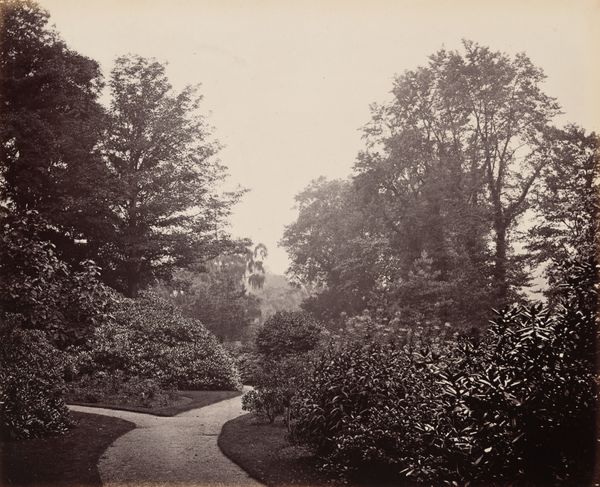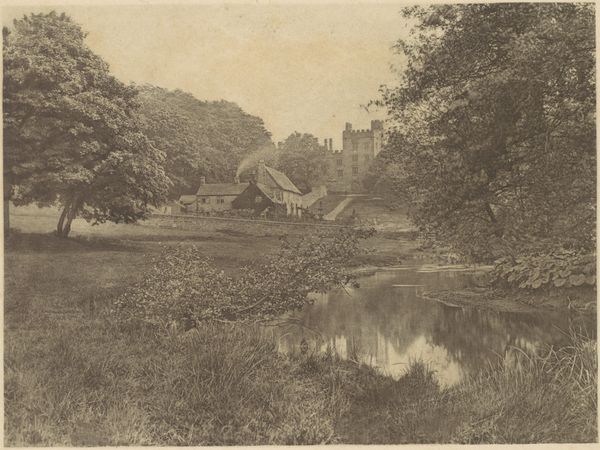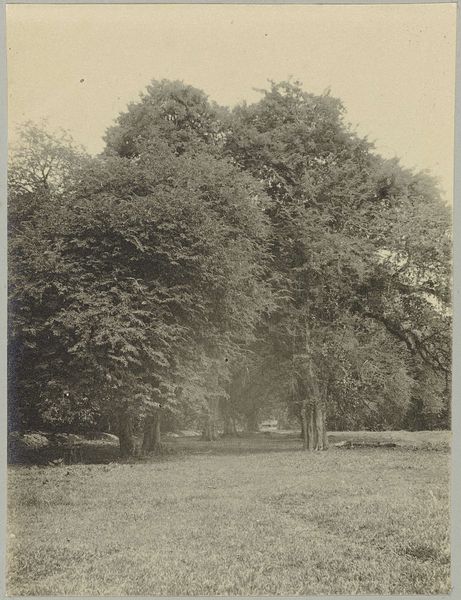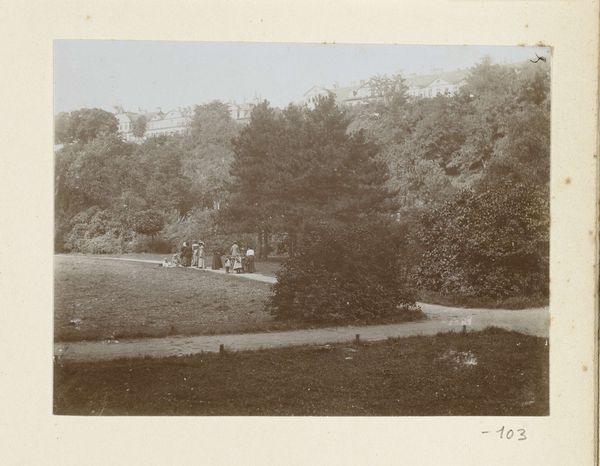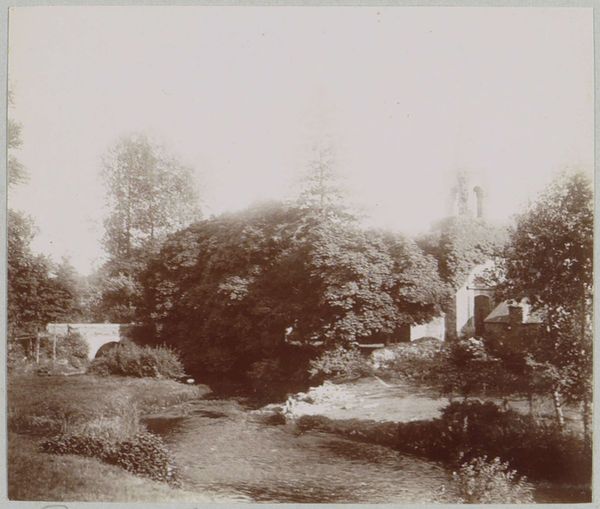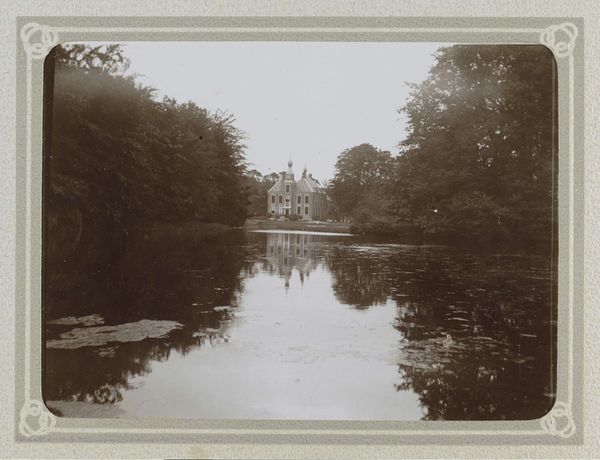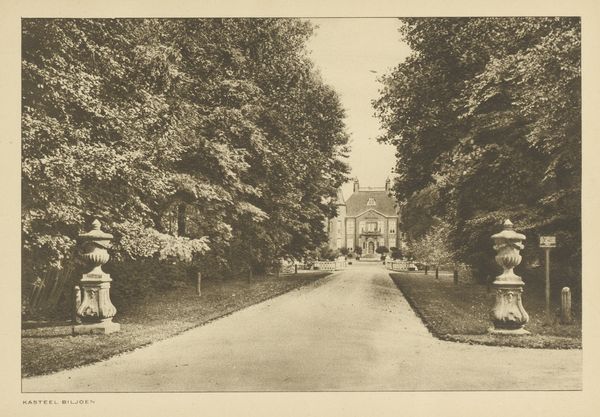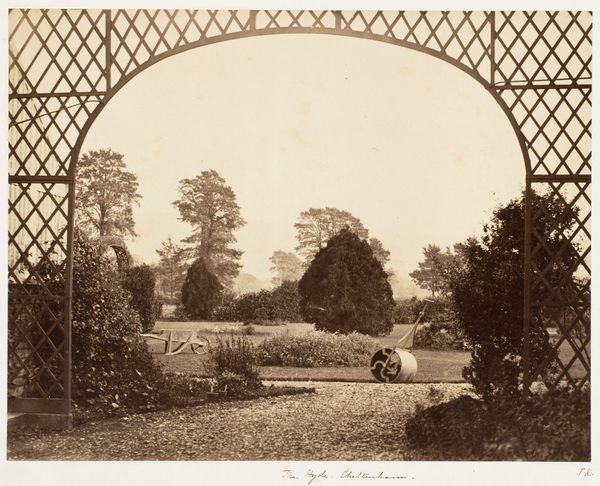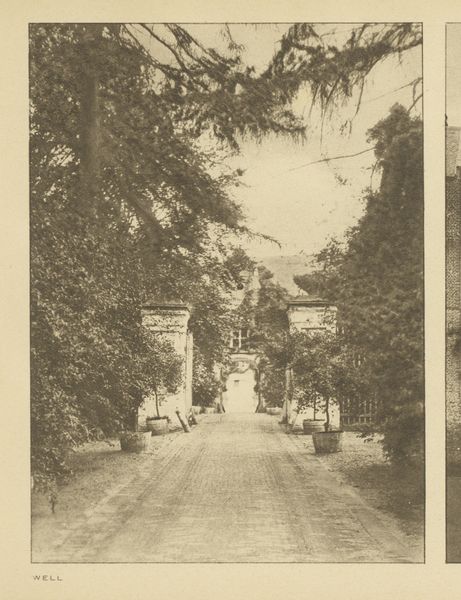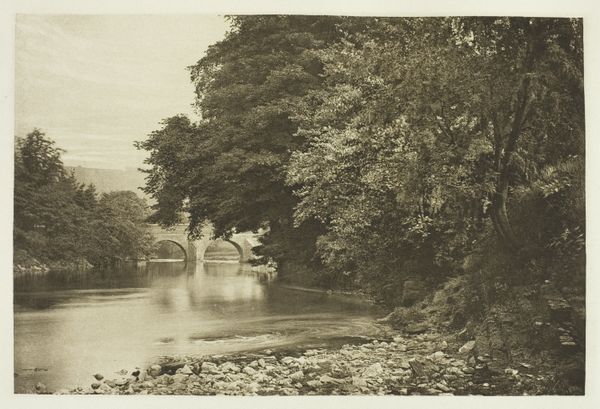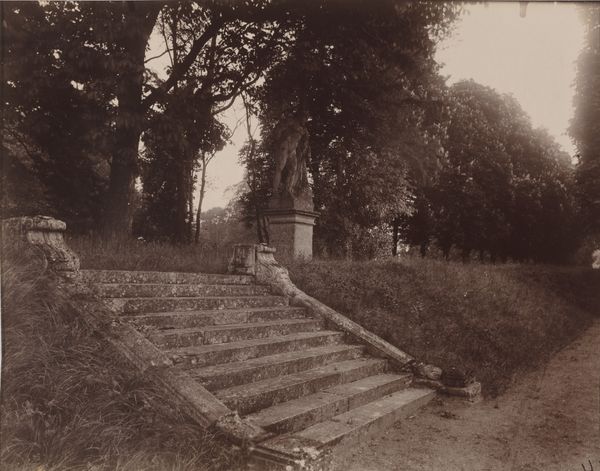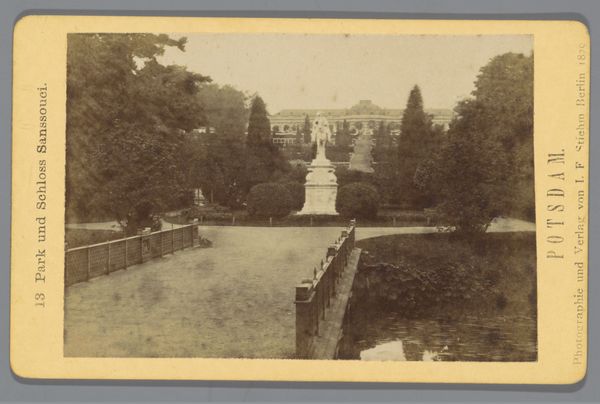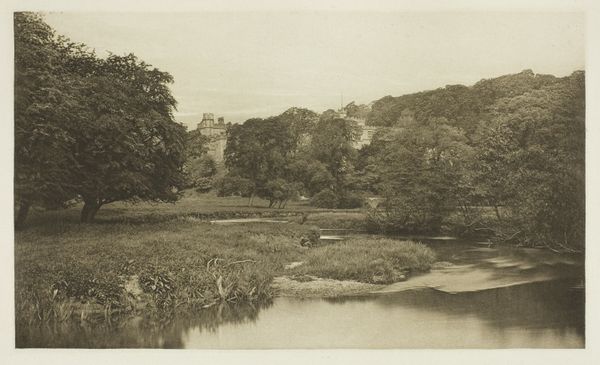
photography
#
pictorialism
#
landscape
#
nature
#
photography
#
england
#
realism
Dimensions: 15.2 × 20.4 cm (image); 16.6 × 21.4 cm (paper); 24.6 × 32 cm (album page)
Copyright: Public Domain
Editor: This is Peter Henry Emerson's "Lady Dorothy's Bridge, Haddon Hall," taken sometime in the 1880s. It’s a beautiful landscape photograph, very atmospheric. What captures my attention is how the architecture of the Hall peeks through all the trees; it makes me wonder about the labor involved in both building and maintaining the hall and the grounds. What do you make of this image? Curator: It's fascinating to consider the material processes at play here. Emerson, as a Pictorialist, manipulated his prints, blurring the line between photography and more traditionally valued art forms like painting. But let's consider the social context: Who had the leisure to commission such a print, and who toiled to build and maintain Haddon Hall, creating this scene Emerson captured? Notice how the bridge and Hall appear dwarfed, consumed by untamed, uncultivated nature; the labour involved in erecting and maintaining that built environment stands in stark contrast. Editor: That's interesting. It’s almost as if nature is reclaiming what’s been constructed, or perhaps it reflects an idealized view of the relationship between land ownership and natural spaces? The image almost obscures that labor… Curator: Precisely. And think about the materials: the photographic paper itself, manufactured industrially, used to create an image of seemingly untouched nature… What implications does this possess? Editor: So the very act of capturing and presenting this scene through photography involved its own material production and economic considerations. It’s far removed from a simple, objective record. Thank you. It provides an entirely different perspective through which I may now view similar artworks. Curator: Exactly! Considering these layers allows us to engage with the work on a deeper, more meaningful level.
Comments
No comments
Be the first to comment and join the conversation on the ultimate creative platform.
